Architectural design has always been a way for man to triumph over nature’s harshest elements. Its initial roots were largely to provide practical shelters and places of worship where people could be safe and comfortable
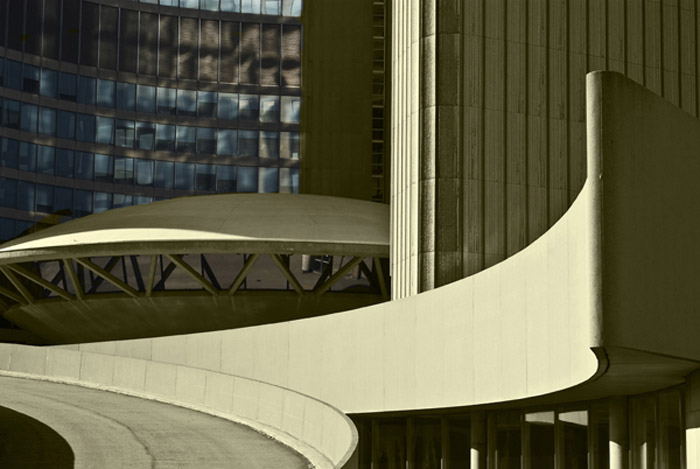
However, architectural designs soon gained a greater complexity, providing cultures with buildings that reflected the greatness and creativity of our civilization. Technology and creative innovation worked hand in hand to create buildings that have “stood the sands of time”.
Many outstanding buildings have individual architectural elements that are not as significant or noticeable upon initial observation. The photography in Architectural Simplicity brings to light my discovery of specific aspects of significant buildings.
The project has not only helped me to become a better photographer, but has helped me better understand characteristics of my own personality; namely, a need to isolate areas of life and concentrate on solutions and understanding.
It is essential to me to find the important elements of an overall subject and work those elements until I feel an order to the composition. After isolating specific details of buildings in this project, I use techniques such as coloring, toning, and black and white alteration, to better promote my vision.
It is of utmost importance to me to go beyond documenting a building. I want to be playful and creative in my interpretation, reflecting the true spirit of creativity found in these architectural designs.
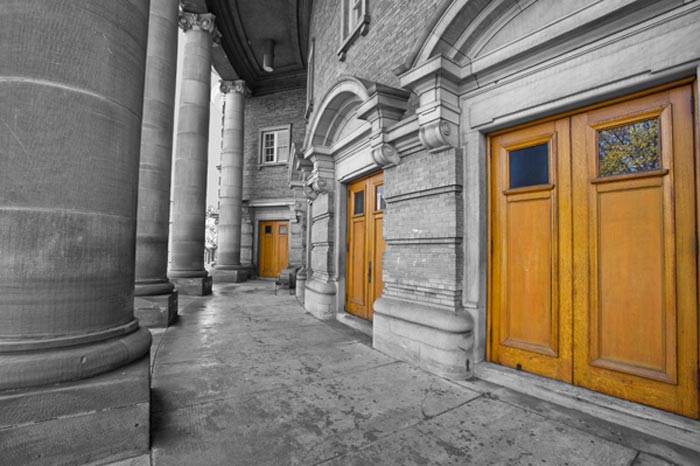
One of the most important aspects to consider when photographing external buildings is a general observation of the structure. Get a feel of the building and an understanding of the important characteristics of the structure by taking the time to walk completely around it. And whether this time is during the day or night, try to observe how the light is falling on the building and note the shadow locations.
If you can do this prior to a planned shoot, then that is even better.
There have been instances in my architecture photography when I have just started photographing a building because of excitement, only later to realize a really important part of the structure was hidden from my view. Experience has taught me to hold my immediate excitement at bay and first conduct a patient observation.
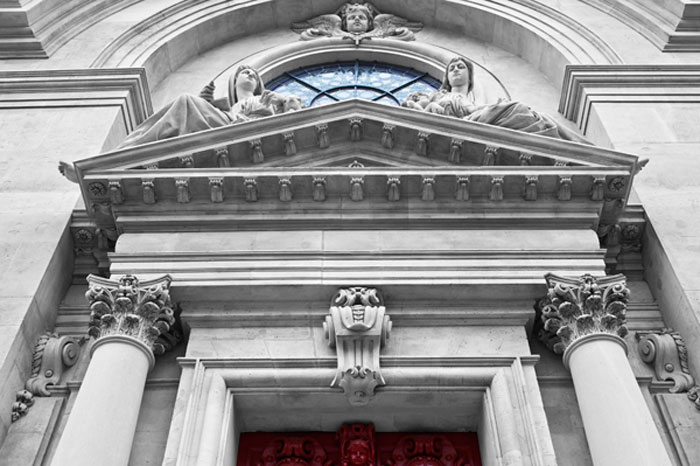
Always aim to photograph during the best light conditions, usually early morning or late afternoon, depending of course on the directional orientation of the building. Side lighting on a building can be very interesting when incorporating shadows into the composition.
Generally the most difficult light to work with is back light because of the high contrast. Understandably, it is not always possible to return to the building during perfect light hours, so rather than saying no to shooting in poor lighting situations, learn to work with and around the best available light. What is most important is to just get out there and make images.
Research, Good Observation and Photography Go Hand-in-hand
It takes time for a building to reveal its important elements to us, so take note of all that you learn and all that you see during an observation. What is it that is distinctive about a particular building?
Research
Learn as much as you can, especially if you choose to photograph historical buildings. It helps to do research and understand the important features prior to the shoot. You can search on the internet, visit you public library or visit historical societies in the area.
Architecture is about human creativity and man’s ability to provide cultural icons. Learning about these icons can lead to a greater focus in our photography and to capturing successful images.
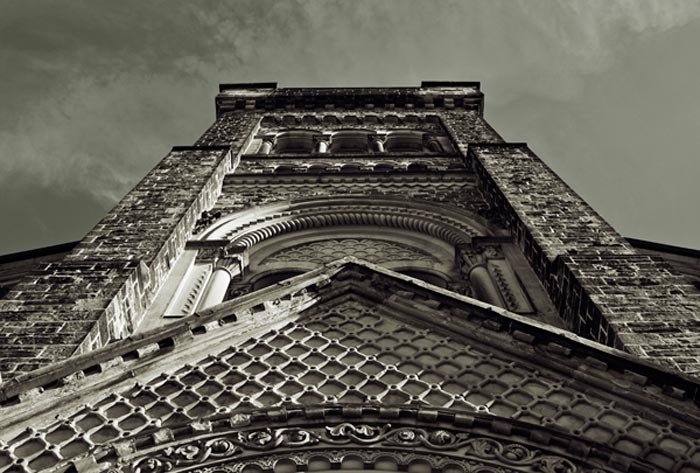
Observation
1. Look for lines and shapes in the building exterior. Are the roof lines oblique or straight? What shapes can you find in the windows, doors and archways?
2. Textures of the building also need to be examined. Is the building material a specific type of wood or brick? Is the texture uniform or is it different in a variety of locations? Do any shapes or patterns come forth in the textures? Is the light interacting or creating a highlight on the building materials and textures?
Coarse building material such as wood, brick, cement and stucco are best accentuated when the sun is at a sharp angle. Smooth building material such as glass and metal are best captured with direct sun and reflections. Try to note anything distinctive and incorporate this into your composition.
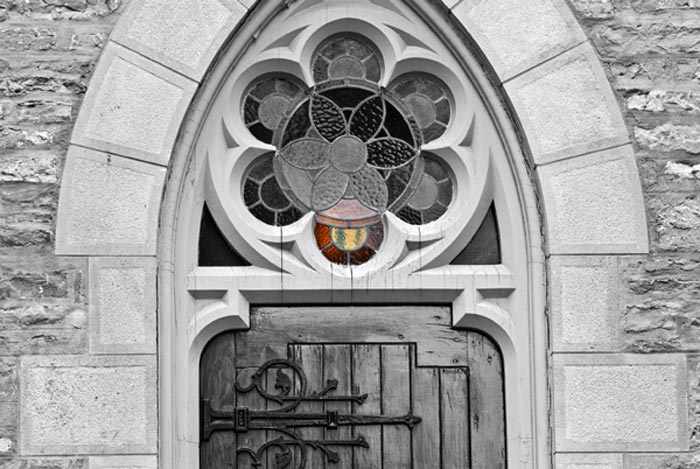
3. Look also for leading lines to and from the building. Sometimes walls or driveways lead your eyes to an important feature of the building. This is especially true when photographing homes, as the landscaped yards tend to have patterned stonework or vegetation that interacts in a favorable way with the building.
It is also a good practice to include the buildings environmental surroundings in the exterior photograph, as it places the building in its natural environment. When I photographed homes in the dry, desert like environment of Merritt, British Columbia, the landscapes distinctive nature was an important feature to add into the images.
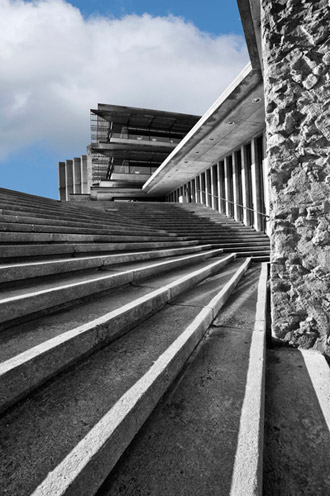
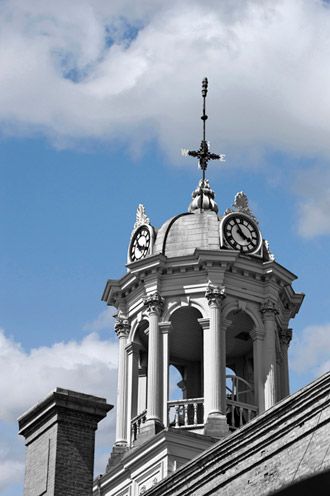
4. Finding good camera angles is important for creating good images in any type of photography, but it is essential in external architectural photography. For example, a low camera angle (looking upwards) makes a building interact greater with the sky. Is there a specific element you want to isolate in the building, like a window design?
It is important to explore a variety of angles and find the one which best defines your vision of the building. Make sure your angle reduces clutter and provides the simplest composition. Generally, I am drawn to the most pleasing light and then after bathing in it and observing the structure, I explore a variety of angles, until my favorite one comes forth.
I also like to play when photographing architecture, meaning I move from angle to angle. I do this initially without a tripod, as I like the freedom and unrestricted movement. The building takes time to reveal itself to me and half the game is in the discovery. Once you find an amazing angle it is time to bring out the tripod and go for the ultimate in stability. Hand holding, even with the new cameras and their higher ISO ability, is still not as stable as a good solid tripod.
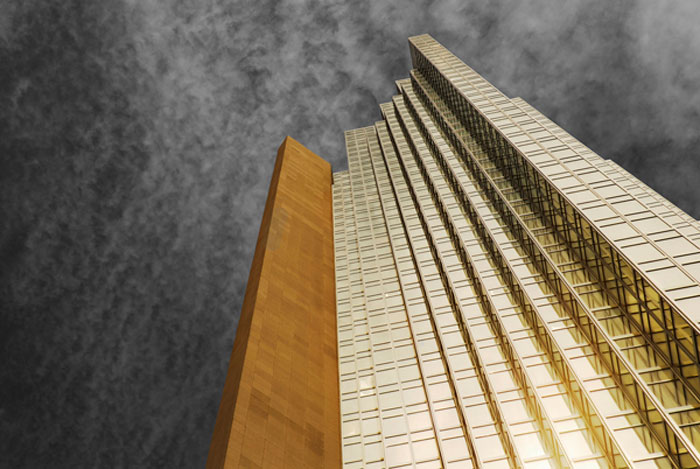
Photo Enhancement
Some of the images in this photo essay have also had some of the original color painted back during post production. I have done this by converting images to black and white in the Photoshop adjustment layer and then using a small brush in the tool section to carefully paint back the original color.
Be sure to use a small size brush, and zoom into the photo at 100 to 200% to paint back the color. I find this is a good way to emphasize a building’s important characteristics. This technique and many others are explained in greater detail in a multitude of Photoshop books and they are typically very easy to master.
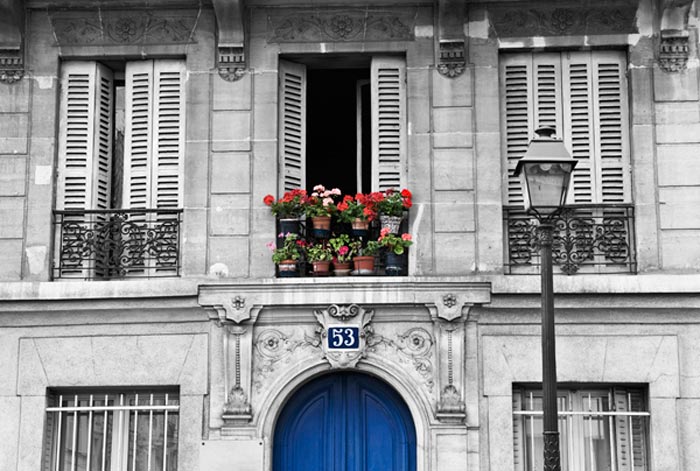
While photographing buildings, patience, good observation and persistence are the major pearls leading to a successful image. Play and explore and it will lead you to new ways of “seeing” not only popular or historic buildings, but any architectural structure that draws your attention. Get out and have fun with your camera around buildings and find out where the adventure takes you. Then take pleasure in the rewards of your images.
By Randall Romano
All text & photos: © Randall Romano. All rights reserved.

Leave a Reply